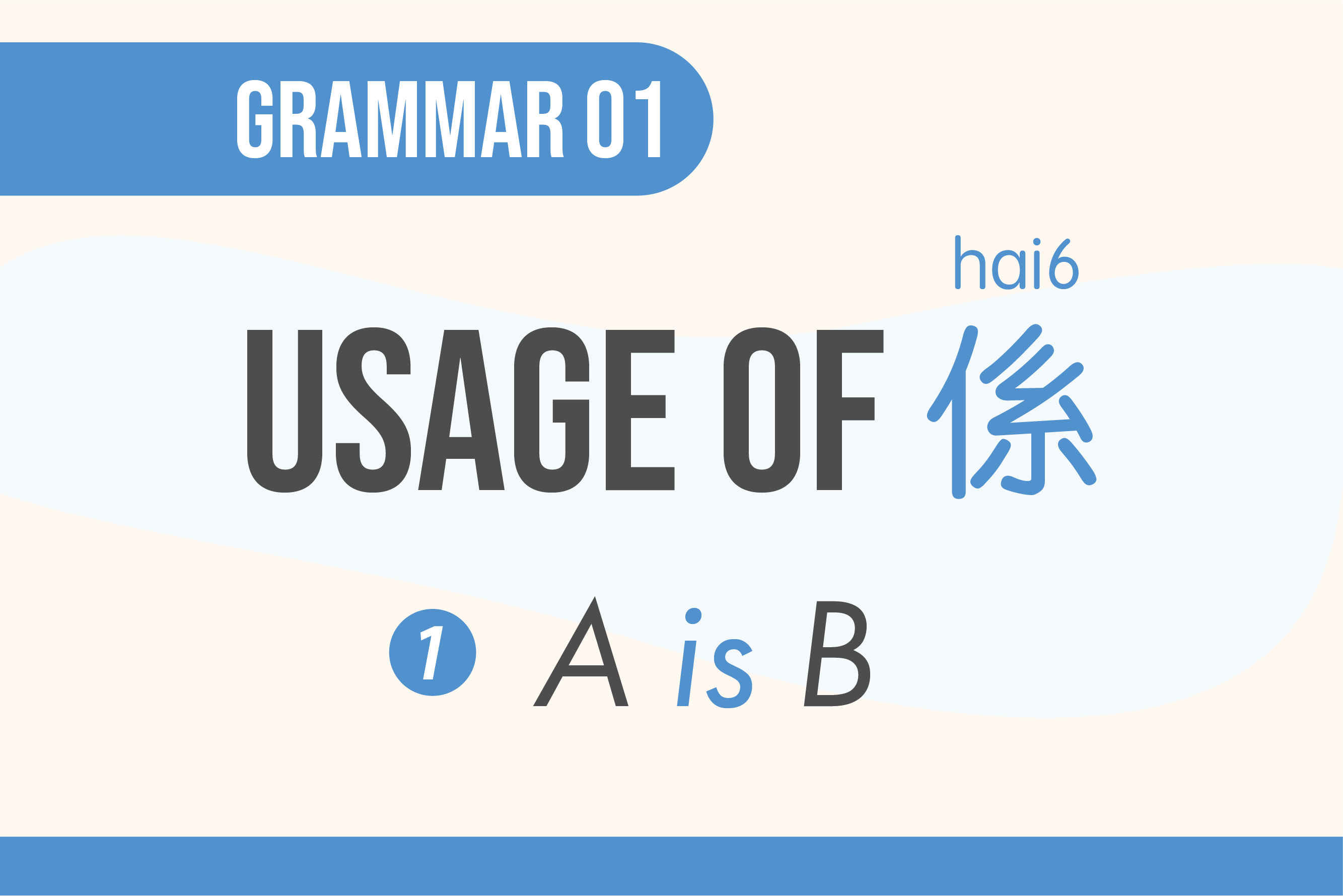Table of Content
Basic Usage
The word 係 in Cantonese serves a similar function to the English verb 'to be' as a linking verb. It primarily links a subject with a noun or noun phrase, establishing an equivalence or identity between the two, where the phrase after 係 usually explains or provides information about the noun before it. Logically, it implies A = B.
Affirmative Sentences - A is B
A 係 B
(n. / n. phr.) 係 (n. / n. phr. / adj. phr.*)
*usually 係 is not used with adj. alone (see additional notes)
我係(一個)老師
I am a teacher.你係(一個)學生
You are a student.蘋果係紅色嘅
Apples are red.
(adj. + 嘅 forms a descriptive phrase)
Negative Sentences - A is not B
When forming negative statements, 唔 is placed before 係 as 唔係, much like how 'not' is used with 'is/am/are' in English.、
A 唔係 B
(n. / n. phr.) 唔係 (n. / n. phr. / adj. phr.*)
*usually 唔係 is not used with adj. alone (see additional notes)
佢唔係我阿哥
He is not my (elder) brother.呢個唔係蘋果
This is not an apple.架車唔係新嘅
The car is not new.
(adj. + 嘅 forms a descriptive phrase)
Question Sentences - Is A = B ?
When forming question, combine 係 and 唔係 to form 係唔係, which convey the meaning of 'Is A = B (or not)?'
A 係唔係 B?
(n. / n. phr.) 係唔係 (n. / n. phr. / adj. phr.*)
*usually 係唔係 is not used with adj. alone (see additional notes)
你係唔係香港人?
Are you a Hongkonger?佢係唔係你阿媽?
Is she your mum?件衫係唔係污糟㗎?
Is the cloth dirty?
Additional Notes
It's important to note that verb 'to be' doesn't always directly translate to 係 in Cantonese. 係's primary role is linking verb that establishes an equivalence or identity.
X with Adjectives
Unlike the English 'to be', usually 係 does not linked directly to adjectives. Cantonese usually omits '係' and directly pairs the subject with the adjective. Learn more Cantonese Adjectives in Learn Cantonese! Grammar07 - Adjectives.
你好高
You are tall.
(lit. You very tall)部電話唔平
The phone is not cheap.
(lit. The phone not cheap)
X with Dummy Subjects
In English, sentences like 'It is raining' or 'It is very hot today' use 'It' as a dummy subject. This kind of grammatical construction is absent in Cantonese. The equivalent Cantonese expressions are more straightforward, omitting the dummy subject and the linking verb.
落緊雨
It is raining.
(lit. raining)今日好熱
It is very hot today.
(lit. Today very hot)
X as Auxiliary Verb
In English, the verb 'to be' is used as an auxiliary in continuous tenses and in forming passive voice constructions. Cantonese, which lacks verb conjugation, does not use '係' in these ways. Learn more about the Continuous Aspect Marker 緊 in Learn Cantonese! Grammar09 - Verb (continuous marker - 緊).
Continuous Tense
我瞓緊覺
I am sleeping.
(lit. I sleeping)
Passive Voice
我俾人打
I was hit (by someone).
(lit. I by someone hit)
X Existential Statements
In situations where English uses 'is' to denote existence, Cantonese uses 有 (have) instead. Learn more about Location and Existence in Learn Cantonese! Grammar06 - Location & Existence 喺 and 有
嗰度有棵樹
There is a tree.
(lit. There has a tree)
This difference often leads to common mistakes among learners, such as Cantonese speakers saying 'There has' in English, or English speakers saying 嗰度係棵樹 in Cantonese.
I know, this may be a lot for you. In short, just remember that 係 is typically used as a linking verb (A = B) in Cantonese, similar to the English verb 'to be'.
